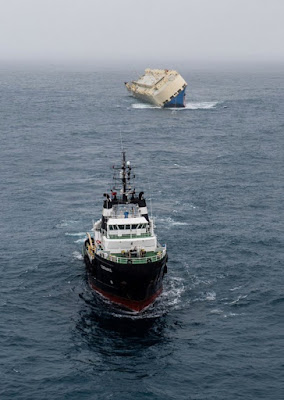Here's a photo of the English Channel, looking towards the east, viewed from above the tip of Brittany. The image was obtained by the first official British astronaut,
Tim Peake, aboard the International Space Station, orbiting the Earth at an average altitude of 350 km.
Click to enlarge
Here are some helpful geographical labels:
I'm not good at identifying landmarks in photos taken from space, but I would imagine that the big dot at the bottom of the photo, above the "o" in Astro, is lighting from the city of
Brest. Above it, one of the dimmer dots on the coastline would indicate the city of
Saint-Brieuc.
During my recent convalescence with my son
François at
Plouha (Côtes d'Armor), I was constantly intrigued by our splendid vision of the English Channel, whose waters lapped the base of the granite cliffs just a few hundred metres in front of the house. We were charmed by the presence of all kinds of small vessels: mainly pleasure yachts and fishing boats. But I often wondered why we never caught a glimpse of giant cargo ships and tankers moving along the busy lanes of the Channel. François showed me how to use my powerful binoculars to get a glimpse of an exotic place near the horizon known as the
Roches-Douvres Lighthouse.
Inevitably, since this name means "Dover Rocks", I immediately asked my son a naive question: "
Is that old lighthouse located in the vicinity of the English town of Dover?" François said no, not at all. So, I never understood (and still don't) why the name of this shelf of rocks, off the coasts of Brittany and Normandy (between the islands of Bréhat and Guernsey), should evoke the distant town of Dover. In the following map, the lower tip of the red blob indicates the location of the Roches-Douvres Lighthouse, whereas a green star marks my viewpoint at Plouha in Brittany.
Click to enlarge
This map of the English Channel makes it clear that, from my son's house in Plouha, I was unlikely to catch sight (even with powerful binoculars) of the stream of great vessels moving along the wide sea-lanes between France and England.
The fist-shaped peninsula of
Cotentin, jutting out from Normandy, includes a pointed finger that seems to be saying "piss off" to any ship's captain moving too close to the French coastline. Fortunately, no courageous Allied commander was led astray by this warning on D-Day, 1944, when the outstretched hand formed rather a sign of V for Victory.








































